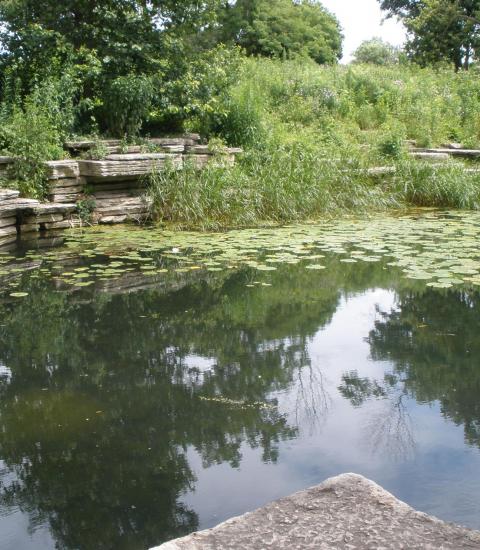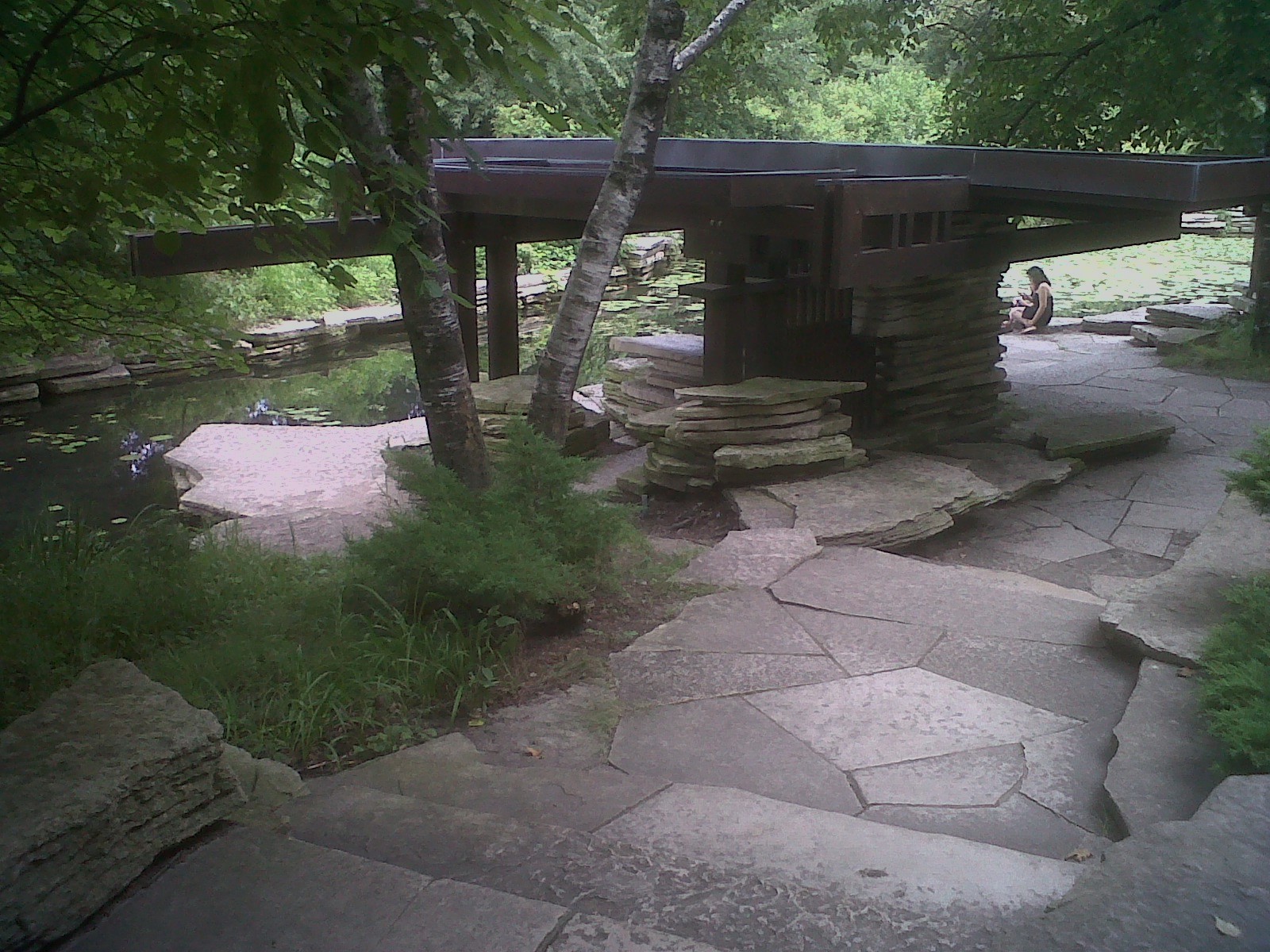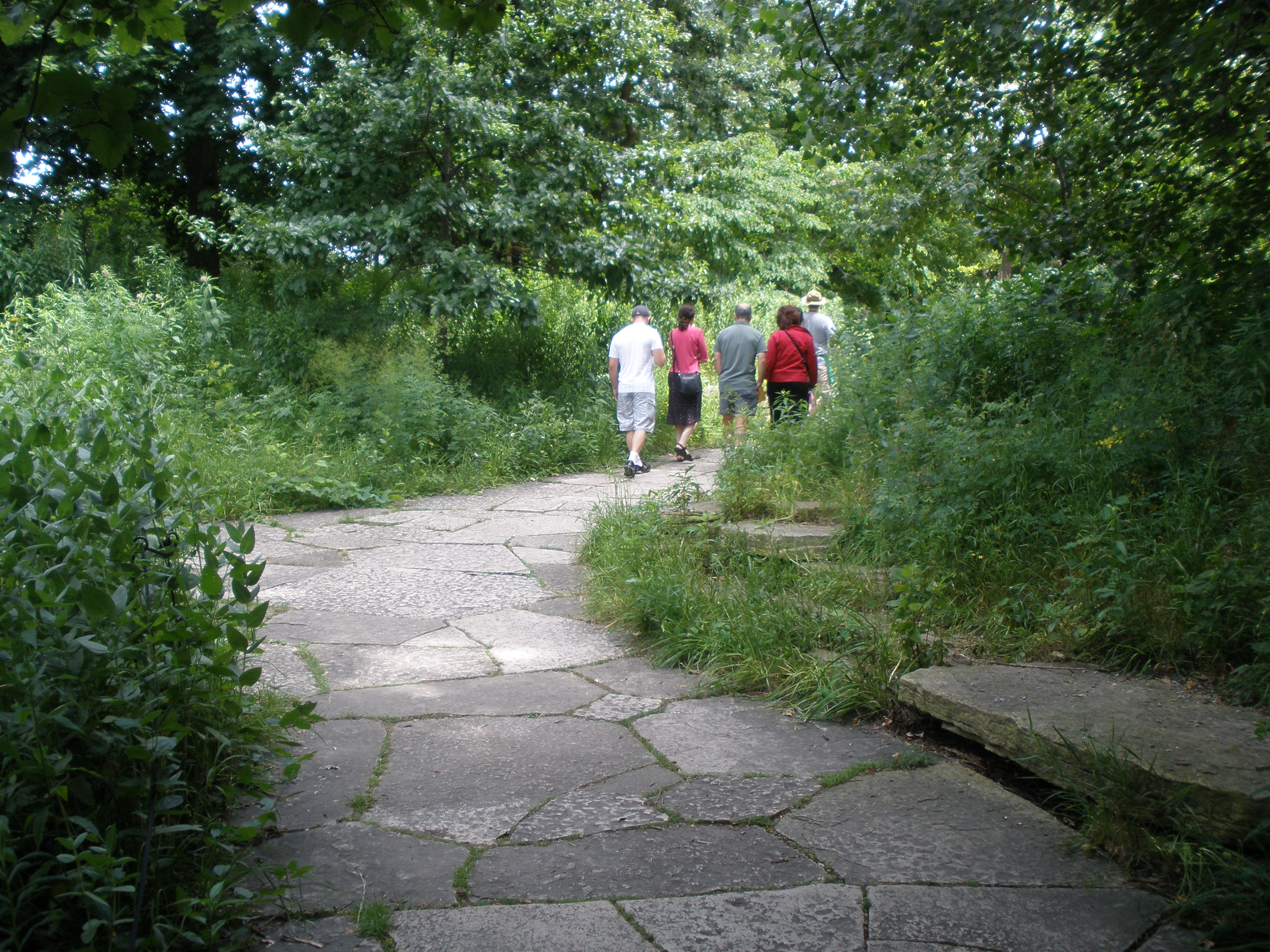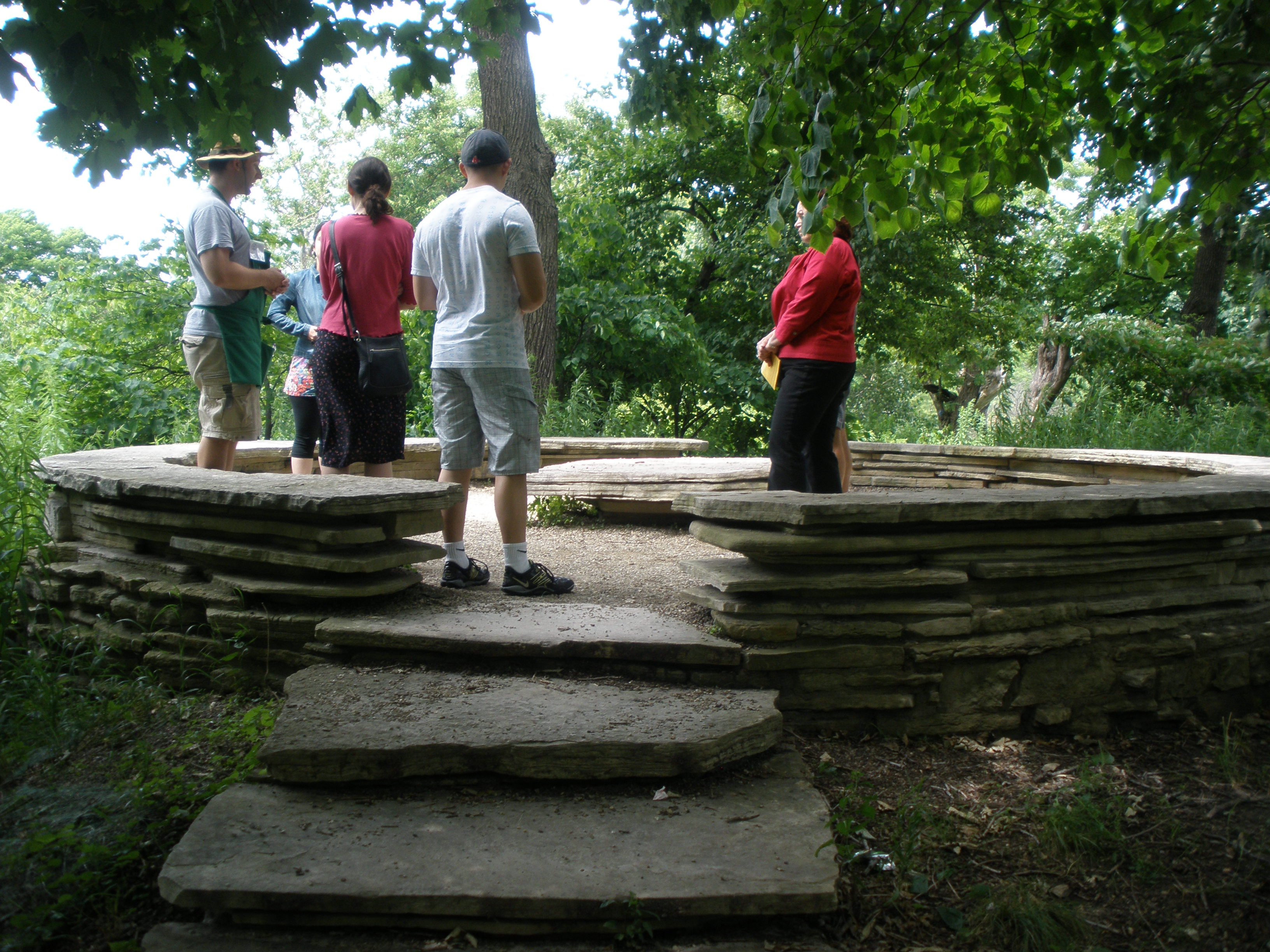
Do you have a favorite place, one that you can conjure up images of in your head when you need a boost of happiness, restoration, or respite? Is this special place outdoors? When you are in or thinking about this special space or place, do you feel a sense of “this is exactly where I need to be to be my best self?” This connection is called place attachment, an intense cognitive-emotional bond that people develop with a place. We experience place attachment to a grandparents front porch, a garden, a sand dune, the lake where you caught your first fish, a cabin in the mountains, a special tree, or a garden, to name just a few. Place attachments are deeply personal and meaningful.
I’d like to tell you about one of my place attachments. This journey begins on Fullerton Parkway at the southernmost edge of the Lincoln Park Zoo in Chicago. If you are not looking for the small, tucked away prairie style entrance, you might miss the 3.14 acre Caldwell Lily Pool, and how sad that would be. It is a gem. Just writing about it makes me glow.

Originally built in the late 1890’s as a sanctuary for growing tropical water lilies and other aquatic plants, the Lily Pool fell into disrepair when the Victorian Period ended. It was redesigned in 1936 by the iconic landscape architect Alfred Caldwell in the prairie style vernacular, which defines much of Chicago’s historic architectural style. Caldwell’s re-design of the Lily Pool was a tribute to the Midwest’s natural ecology. By the 1950’s the garden had deteriorated and was loaned to the adjacent Lincoln Park Zoo to be used as a rookery. This avian retreat caused further damage to the Lily Pool and once again, it fell into disrepair and for many years, was closed. Trees and shrubs grew out of control, the extensive stonework broke, and the pool filled with debris. In 2001, the Chicago Park District partnered with Friends of Lincoln Park to fund raise to bring the Caldwell Lily Pool back to life and expand its accessibility features.
I first visited the Caldwell Lily Pool in 2008 with my family and some friends, who had promised I would not be disappointed. That was an understatement! From the exact moment we entered through the gate, I felt an inexplicable sense of belonging. Calm, and wrapped in a gentle blanket of soft fascination, I felt enveloped and safe in a way I had experienced only a few times before. I felt like I was where I needed to be, as if I were in a sanctuary. I have been back to the Caldwell Lily Pool many times since and each visit elicits this same sense of attachment and connection. I become quieter, my breathing slows, I walk slowly, and I look and listen. My thoughts are only of those in the moment; there is no need to think about what happened before or what will come next. It is blissful.

Perhaps it is far-fetched to attribute resilience to a garden, but the Caldwell Lily Pool has re-emerged from the ashes three times, each time a better iteration of what it was before. To be honest, I knew nothing of the Lily Pool’s history until after our visit. Maybe in some unexplainable way from the outset of my first visit there, I knew that the garden had triumphed when faced with seemingly insurmountable challenges and it comforted me.
In trying times such as the far reaching impacts of the global pandemic and racial and social unrest we are currently experiencing, it reassures me to know that, like a garden, we too can re-emerge from challenges stronger than before.

Alfred Caldwell summed it up perfectly, describing the Lily Pool as, ““A cool, refreshing, clear place of trees and stones and running water.” And there we have it; one of my place attachments, a place I am profoundly and emotionally connected with. When you can, take some time to visit. Walk lightly, speak little, just listen, breathe deeply, and simply be.
Resources
https://www.chicagoparkdistrict.com/parks-facilities/lincoln-park-alfre…
http://lincolnparkconservancy.org/projects/alfred-caldwell-lily-pool/
